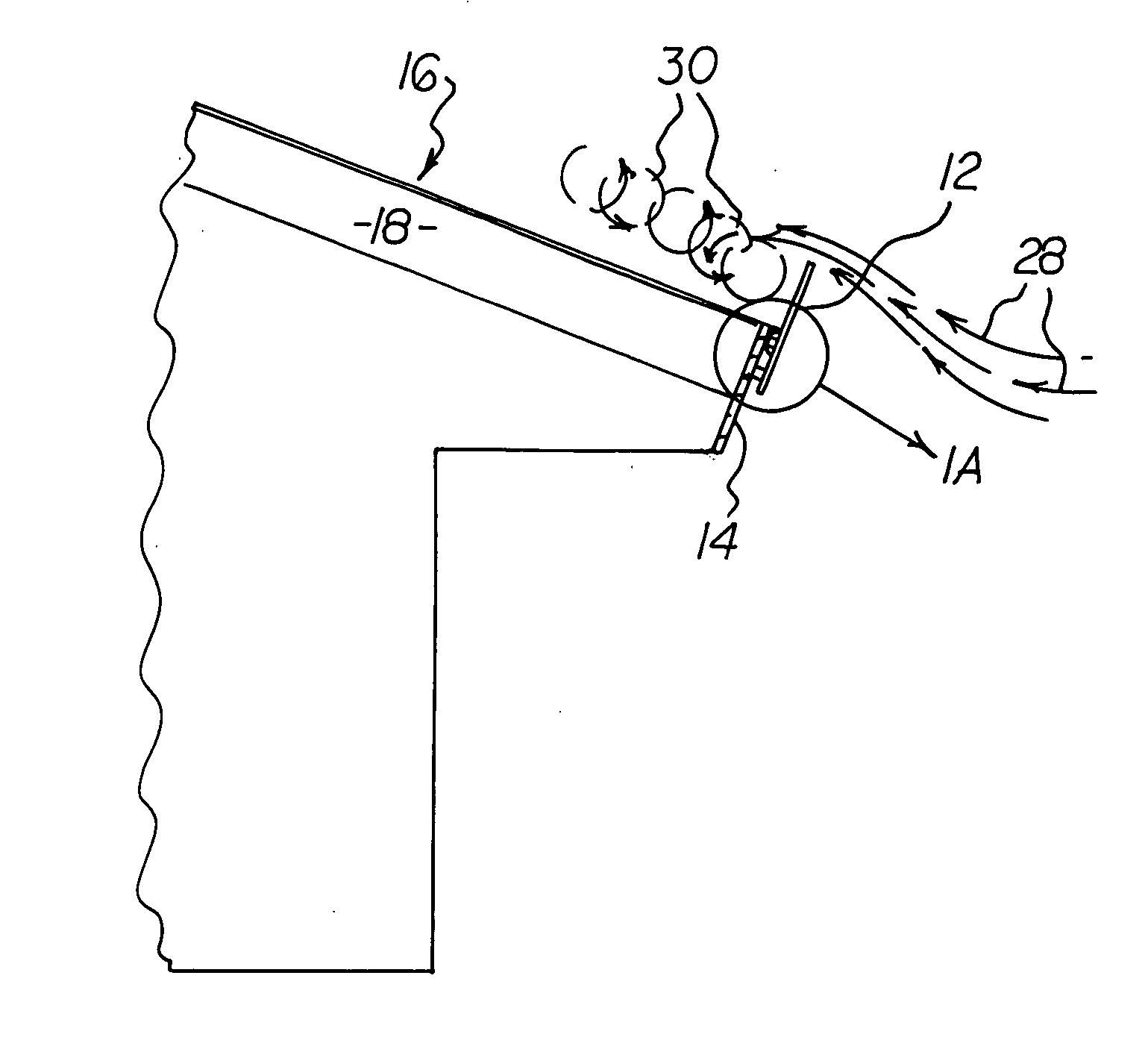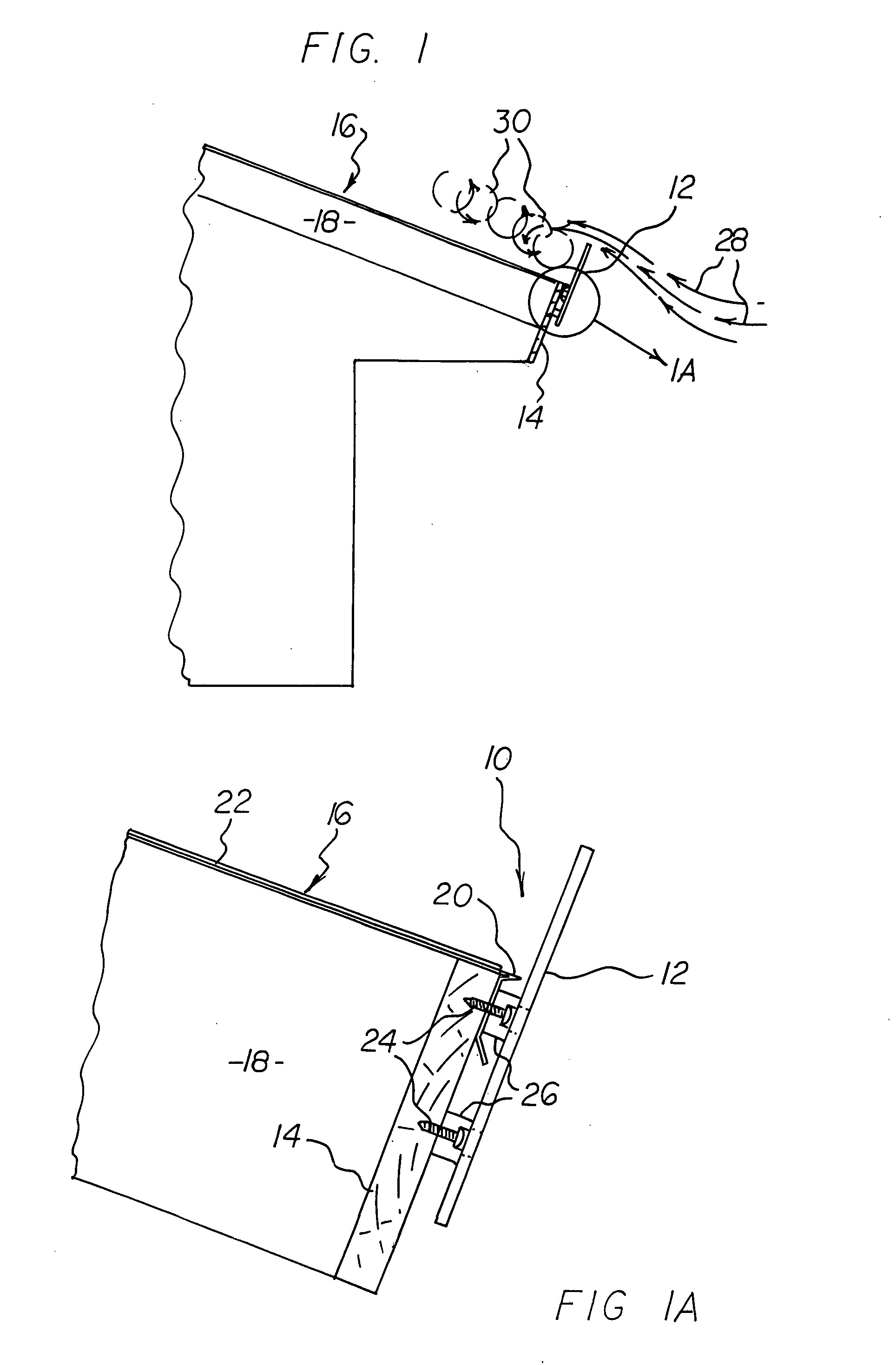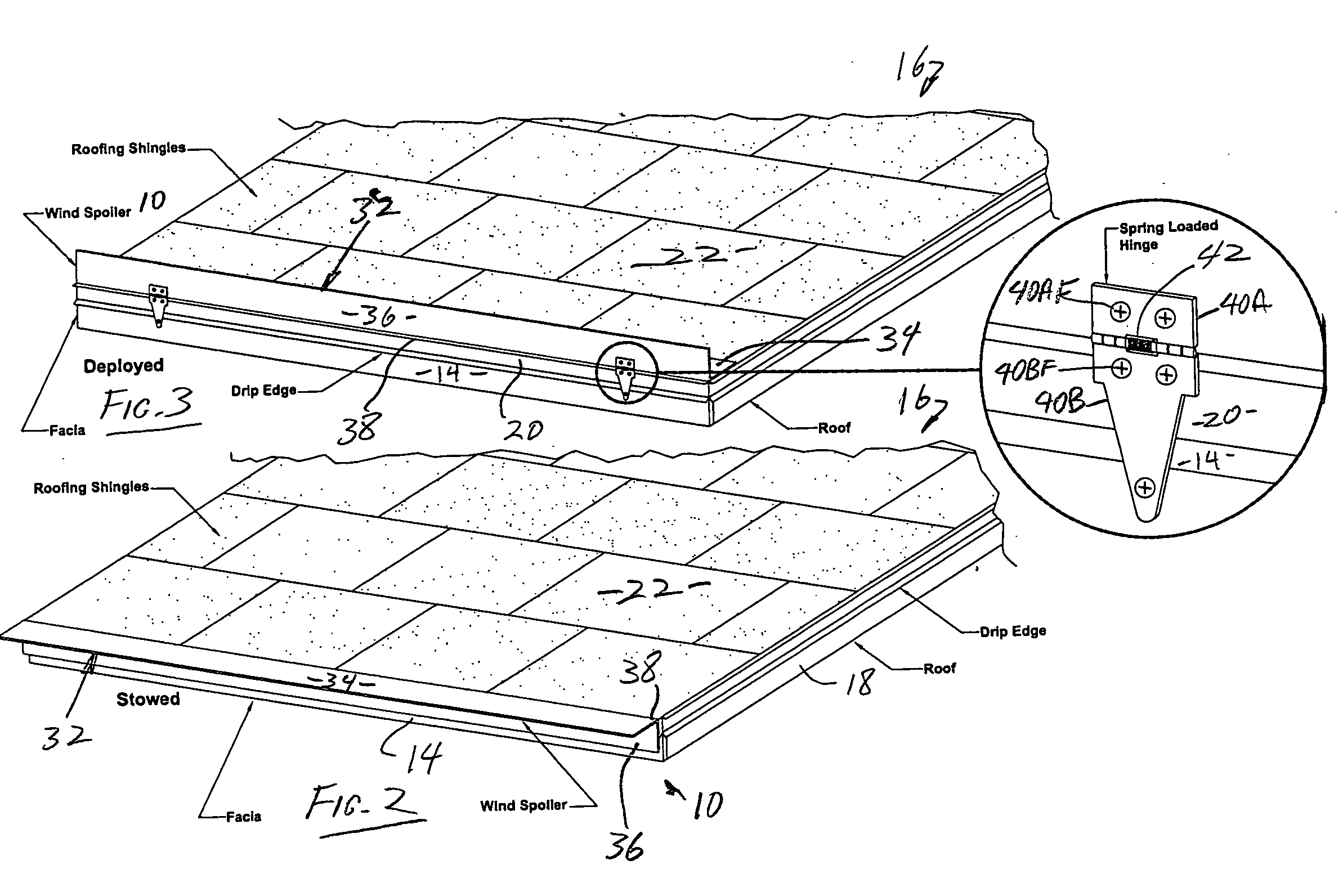Wind spoiler for roofs
a technology for roofs and spoilers, applied in the field of roofs, can solve the problems of affecting the air flow of air, the damage of roofs, and the most devastating types of damage that can occur to a structure, and achieve the effect of reducing the low pressure lifting for
- Summary
- Abstract
- Description
- Claims
- Application Information
AI Technical Summary
Benefits of technology
Problems solved by technology
Method used
Image
Examples
Embodiment Construction
[0033] Referring to FIG. 1, the fixed embodiment of the wind spoiler 10 of the invention comprises a generally flat elongated vertical member 12 that is mounted to the fascia 14 of a roof 16 to extend upwardly above the plane of the roof 16. More particularly, as shown in the partially-expanded view of FIG. 1, a plurality of roof joists 18 are provided to define the plane of the roof 16. The fascia 14 is then nailed to the leading edges of the roof joists 18. A drip edge 20 is then fitted over the uppermost edge of the fascia 14 to direct rainfall to drip from the drip edge 20 instead of the fascia 14 itself. Conventional roofing shingles 22 are installed on the upper surface of the roof 16, typically by nailing.
[0034] The vertical member 12 of the wind spoiler 10 of the invention is mounted to the fascia 14 by suitable fasteners such as screws 24. As shown, the vertical member 12 may be positioned slightly away from the drip edge 20 by means of stand-offs 26 so as to not interfere...
PUM
 Login to View More
Login to View More Abstract
Description
Claims
Application Information
 Login to View More
Login to View More - R&D
- Intellectual Property
- Life Sciences
- Materials
- Tech Scout
- Unparalleled Data Quality
- Higher Quality Content
- 60% Fewer Hallucinations
Browse by: Latest US Patents, China's latest patents, Technical Efficacy Thesaurus, Application Domain, Technology Topic, Popular Technical Reports.
© 2025 PatSnap. All rights reserved.Legal|Privacy policy|Modern Slavery Act Transparency Statement|Sitemap|About US| Contact US: help@patsnap.com



